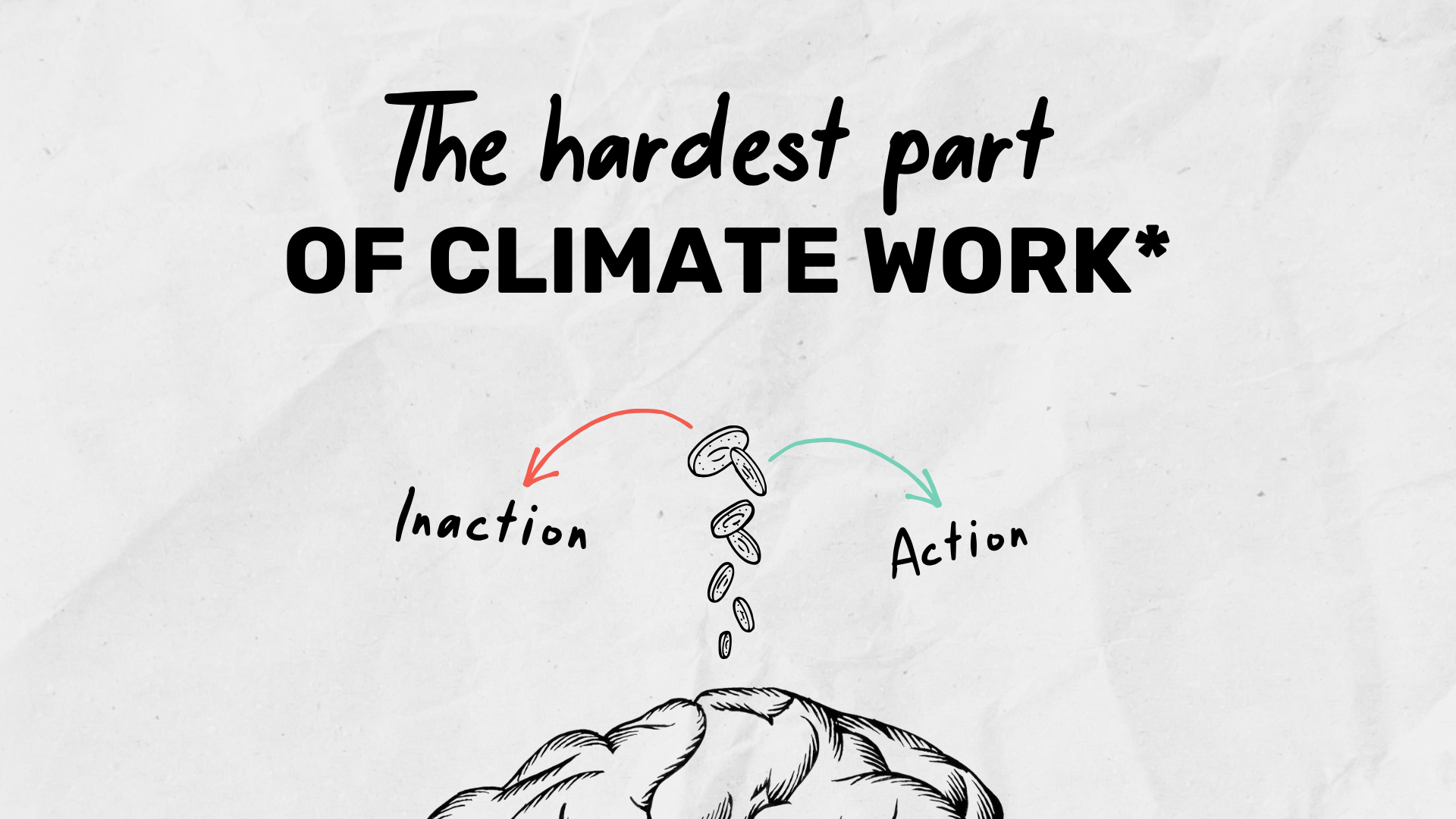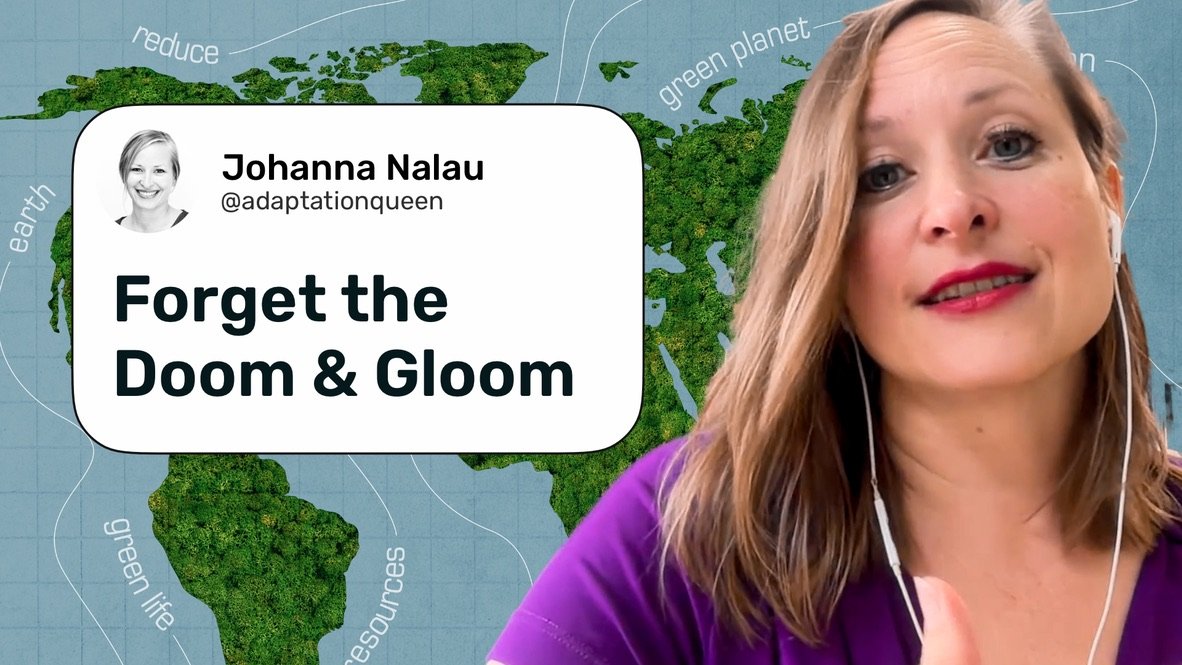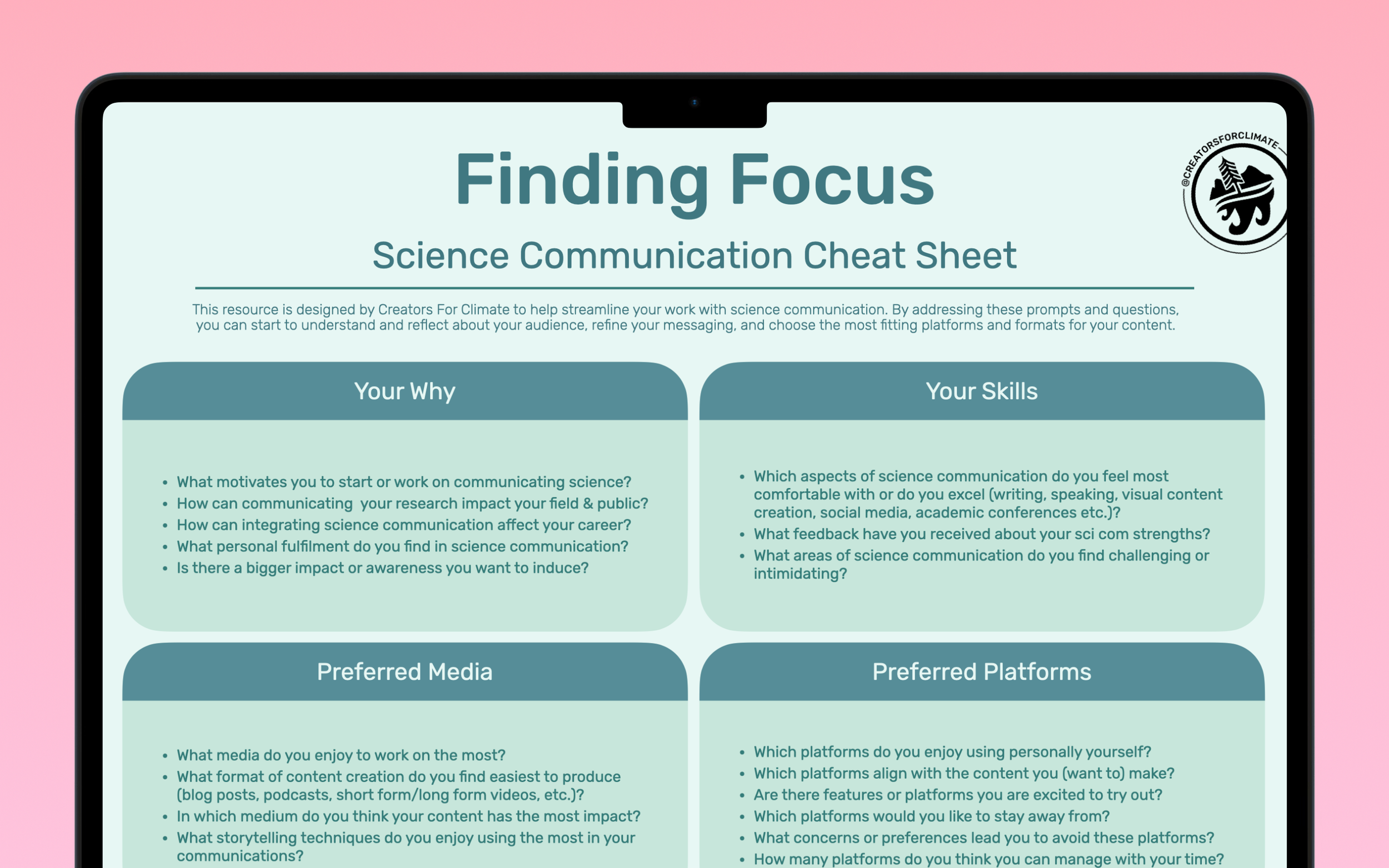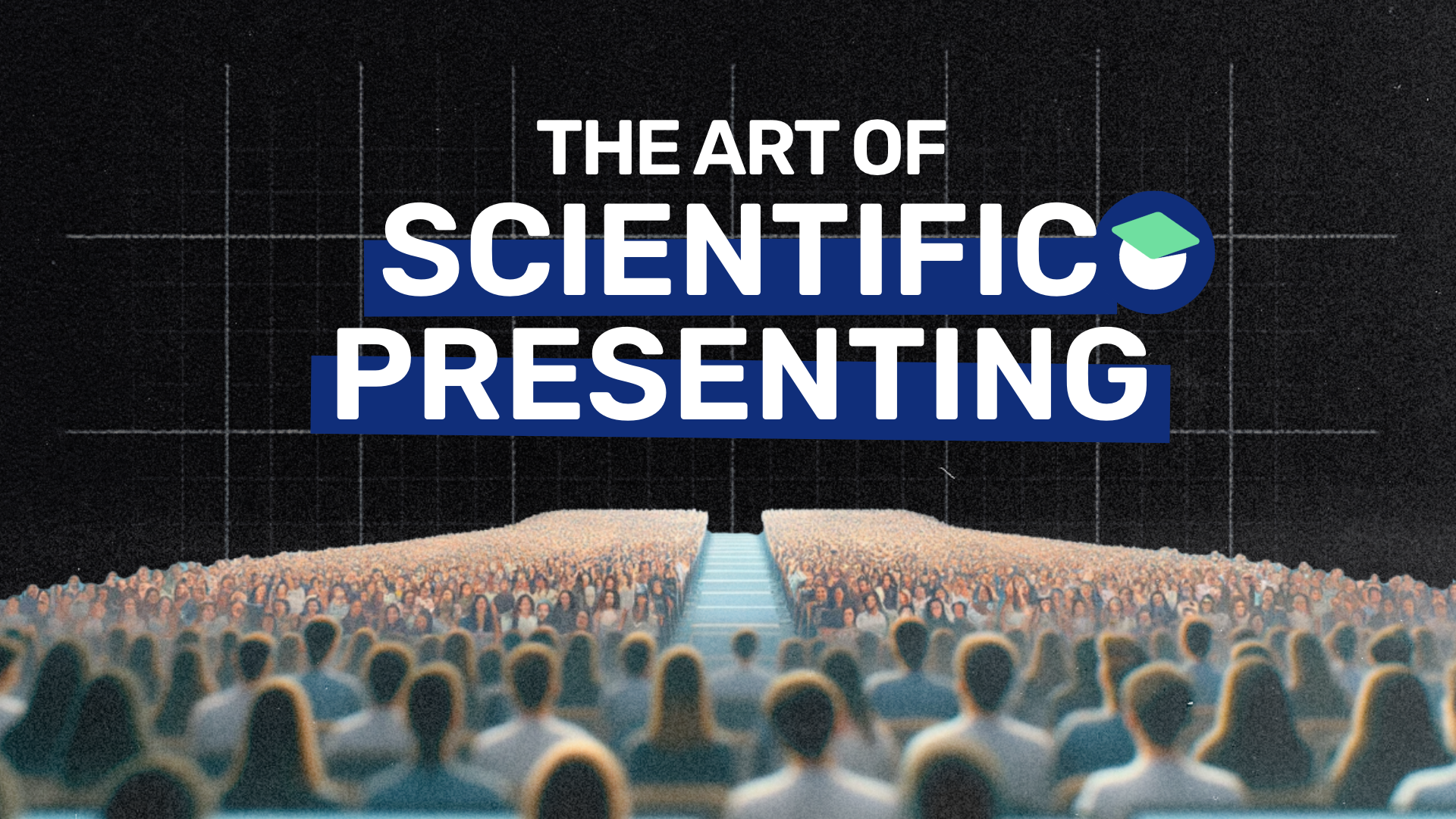Take a minute to read the blog
About creating climate content and science communication.
Our Role as Climate Creators (and yours too?)
Every year around this time, inboxes fill with the same messages: a veggie challenge, swap your coffee cups for reusables, buy local produce, eat locally. And while these things matter (a lot), they tend to frame climate action as an annual checklist. Well, Earth Day is here again pretty soon, and this time we’re collaborating with EARTHDAY.ORG to shift that conversation.
Let’s talk worldviews, fear and the courage to speak up.
Some of you might recognize this sentiment: "I'm not sure if I can continue. I worked so hard for the cause, but it all seems to be for nothing nowadays". It's a vibe our field has been hit with... hard. Let's dissect that through these 4 different lenses below.
5 Psychological barriers to connecting with your audience
What if we stopped trying to convince and instead started connecting? In this entry we'll look at creating campaigns with impact. How changing behavior starts with the way you talk to your target audience.
What do you call creators who talk about climate?
Seriously, what do you call a creator who integrates climate and environmental themes into their storytelling? No, this is not the start of a joke, but a niche with an identity crisis.
How Neil deGrasse Tyson thinks about climate change
If you’re a climate communicator, an activist or just a human trying to make sense of it all, it’s easy to feel consumed by the chaos. We'll take a look at how we can find back our peace and calm. Anxiety can be overwhelming, but that doesn't mean there is no light at the end of the tunnel.
5 Rules of Sanity in a world on fire
If you’re a climate communicator, an activist or just a human trying to make sense of it all, it’s easy to feel consumed by the chaos. We'll take a look at how we can find back our peace and calm. Anxiety can be overwhelming, but that doesn't mean there is no light at the end of the tunnel.
Case Study: Cleaning up the Dirtiest River in Europe
This blog serves as a case study to learn more about our Creators For Climate Missions, focusing on what worked well and the lessons we learned along the way. We’ll cover insights from both an environmental perspective and the content strategy side. See it as a blueprint for upcoming environmental campaigns.
What happens when we fix climate change? With Johanna Nalau
Let's explore climate adaptation with A/Prof. Johanna Nalau: Where does climate mitigation end and adaptation start, how can we implement these strategies today, and what is the role of imagination in facing climate change impacts?
Annoyed by Climate Activism? Here’s why it works 🌍
We zoom out to discuss the social change we need. Dana R. Fisher explains why activism seems so sensational and disruptive, helps us explore the concept of an anthroshift and practical steps for the way forward (from a sociologist perspective)!
Changing our climate behavior 🧠
In this episode we’re diving into the science behind climate behavior with Ryan O’Donnell (@TheDailyBA), understanding why people often ignore climate topics, and exploring tools and techniques to create content that connects, instead of pushing people away.
From Influencer to Eco Creator 🌍
In this episode we're exploring environmental content creation with @margreen_s, the emotional impact of being an eco creator and how streaming can help us rethink the way we tell stories in the field.
Introducing: The Creators For Climate Podcast
Welcome to the Creators For Climate podcast. Just like you, we are looking for answers about our role in this changing world. So in this show we’re going to sit down and talk shop with a wide range of guests and give you a virtual seat at our table. Here is episode 1!
Find Focus and build a Personal Brand that connects with your Audience.
What makes those big name creators and science communicators more successful than others? It’s a question I’ve been racking my brain over for the past decade and I decided to do some digging. This blog dives into the key aspects that all these ‘personal brands’ have in common: Focus in their work, knowing their audience in and out and adapting their communication style to fit their audience.
How to come up with content ideas for your research.
In this post we’ll look at a practical exercise designed to help scientists and researchers create engaging social media content from their work. We’ll see how you can brainstorm possible topics to talk about or even better, come up with a bunch of ideas that you can turn into social media content. Let’s get started!
From traditional science posters to social media slides with the AIDA framework.
Carousel and slide posts, many people love them, we science communicators should adore them. These posts are essentially a modern day slideshow and are especially useful for presenting complex scientific topics in a format that is easy to digest and visually engaging. With this blog let’s explore how to create these ‘carousels’, and how you can turn those traditional science posters into actual engaging social media posts using the AIDA method.
Master “The Art of Scientific Presenting” with this Online Course
Introducing a class to learn more about academic presenting. As partner of the RALDE project, Creators For Climate got to collaborate on creating a course with the focus on disseminating scientific
research. With this course we got to sit down with students and teachers, to understand the needs and especially the pains when it comes to presenting your research to the scientific community. We went back to the basics and created an online course that will get you started, wherever you are in your presenting journey. So let’s see what you can expect from these lessons.
Why Conspiracy Theories Thrive and what we can learn from them.
Ever since the pandemic I’ve found myself curious as to why someone might hold such a strong belief into these wild theories. Interacting with these ‘Facebook warriors’, friends and even family, I asked myself how we can have conversations to address some objective truths that won’t lead into name calling and verbal abuse. In this article, I’m going to share some insights I picked up about the world of conspiracy theories, exploring their impact on our sense of belonging. What can we learn about the people behind the conspiracy?
Why Science Communication is important to combat Climate Change
Climate change is undeniably one of the most pressing issues of our era. While the scientific community is hard at work researching and understanding the intricacies of this global challenge, there's another equally crucial task at hand: communicating these findings to the public. In this article, we’ll take a plunge into the significance of science communication in addressing climate change and some tools you can use in the collective fight against this, existential, threat.
But, what can I do about the Climate Crisis?
In this TED Talk, Dr. Ayana Elizabeth Johnson delivered a compelling message about the role each of us can play in addressing the climate crisis. As she notes herself: You’ll find her at the nexus of science, policy, and communication, focused on climate solutions. But let’s take a look at her presentation - and what we can learn from that for those eager to make a difference. What can you do about climate change?
Overcoming Common Challenges in Science Communication
For many scientists, especially aspiring PhDs and young researchers, the journey of science communication is filled with challenges. Conveying complex ideas in an accessible manner can often feel like translating a foreign language. But there is hope! When you know what will hold you back or slow you down, you can start to think ahead. With the right strategies in place, these hurdles can be transformed into stepping stones. Let's look into some common challenges faced by us science communicators and explore how to solve them.






















